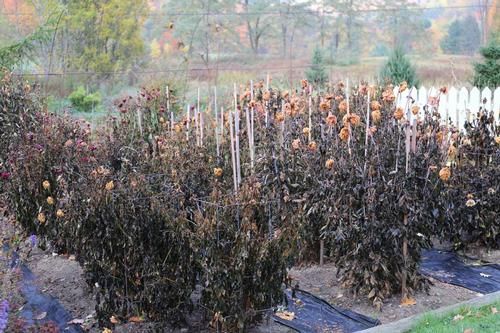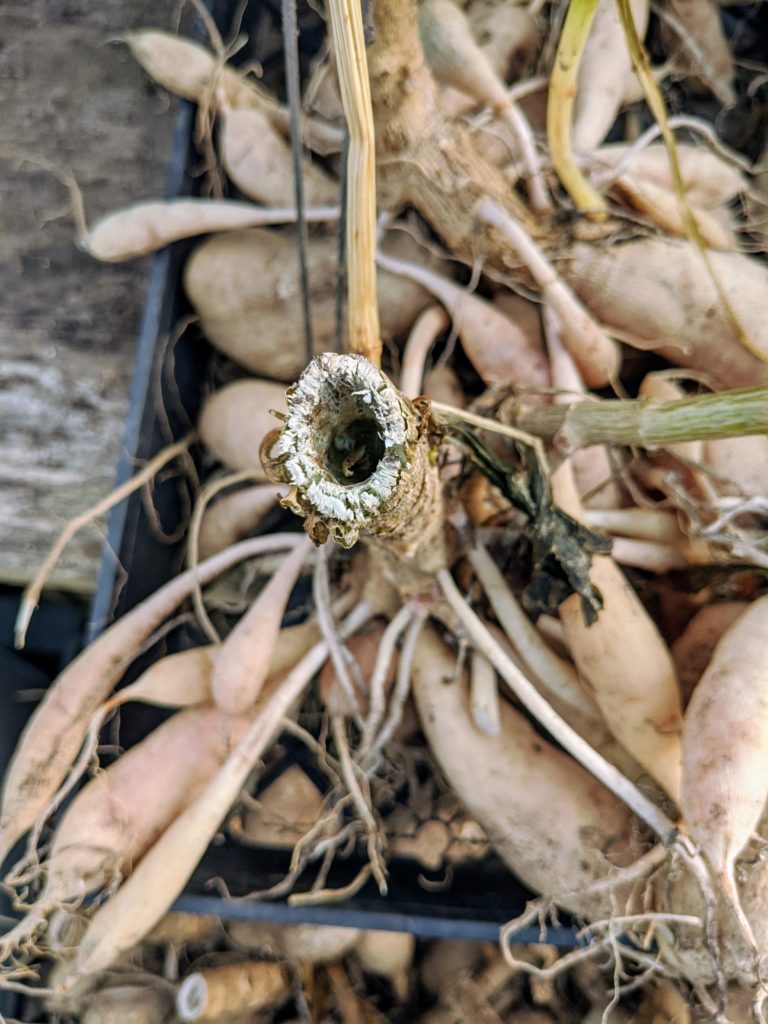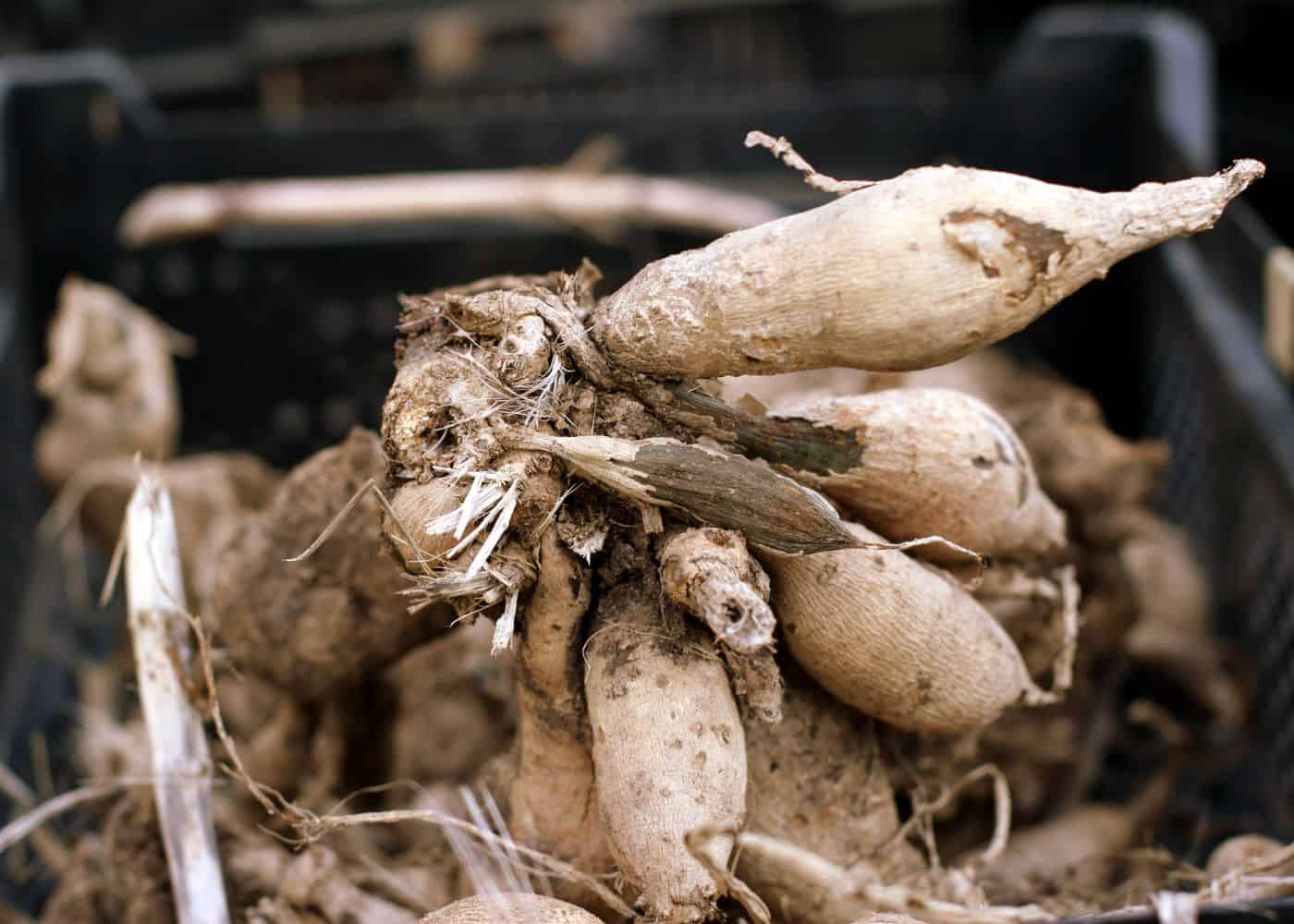Why Proper Storage is Crucial for Healthy Dahlias
Storing dahlia tubers correctly is essential to ensure their survival during the winter months and promote healthy growth in the spring. Improper storage can lead to rot and decay, which can be detrimental to the tubers. When dahlias are not stored properly, they can become vulnerable to disease and pests, which can spread quickly and cause significant damage.
To avoid these issues, it’s crucial to understand the importance of proper storage techniques. Dahlias are sensitive to extreme temperatures, moisture, and light, which can cause them to deteriorate quickly. By storing them in a cool, dark place with adequate ventilation, you can help to slow down the deterioration process and keep them healthy until the spring.
One of the most common mistakes people make when storing dahlia tubers is to store them in airtight containers or plastic bags. This can cause the tubers to become waterlogged and develop rot, which can be fatal. Instead, it’s recommended to store them in a breathable container, such as a paper bag or a cardboard box, to allow for airflow and moisture transfer.
Another critical factor to consider when storing dahlia tubers is the temperature. Dahlias prefer cooler temperatures, between 40°F and 50°F (4°C and 10°C), which can help to slow down the deterioration process. Avoid storing them in areas with extreme temperatures, such as near heating vents or drafty windows.
By understanding the importance of proper storage techniques and taking the necessary steps to store your dahlia tubers correctly, you can help to ensure their survival and promote healthy growth in the spring. In the next section, we’ll provide a step-by-step guide on how to prepare your dahlia tubers for storage, including cutting back foliage, digging and cleaning the tubers, and allowing them to dry.
Preparing Dahlia Tubers for Storage: A Pre-Winter Checklist
Before storing dahlia tubers, it’s essential to prepare them properly to ensure their survival during the winter months. Here’s a step-by-step guide on how to prepare your dahlia tubers for storage:
Step 1: Cut Back Foliage – About 4-6 weeks before the first frost, cut back the dahlia foliage to within 2-3 inches of the ground. This will help to reduce the risk of disease and encourage the tubers to go dormant.
Step 2: Dig and Clean the Tubers – Carefully dig up the dahlia tubers, making sure not to damage them. Gently remove any excess soil and debris, and wash the tubers with water to remove any remaining dirt.
Step 3: Allow the Tubers to Dry – Place the cleaned tubers in a warm, dry location with good air circulation. Allow them to dry for 2-3 days, or until the skin is dry and papery. This will help to prevent rot and decay during storage.
Step 4: Inspect the Tubers – Before storing the tubers, inspect them for any signs of damage or disease. Remove any damaged or diseased tubers, as they can spread disease to healthy tubers during storage.
By following these steps, you can help to ensure that your dahlia tubers are properly prepared for storage. In the next section, we’ll discuss the different storage methods for dahlia tubers, including storing in a cool, dark place, using a breathable container, and applying a layer of mulch or straw.
Choosing the Right Storage Method for Your Dahlia Tubers
When it comes to storing dahlia tubers, there are several methods to choose from, each with its own pros and cons. The right storage method for you will depend on your specific climate, available space, and personal preferences. Here are some of the most common storage methods for dahlia tubers:
**Cool, Dark Place**: Storing dahlia tubers in a cool, dark place is one of the most popular methods. This can be a basement, garage, or shed, as long as it is consistently cool and dark. This method is ideal for those who live in areas with mild winters, as it allows the tubers to remain dormant without freezing.
**Breathable Container**: Using a breathable container, such as a paper bag or a cardboard box, is another popular storage method. This allows for airflow and moisture transfer, which can help to prevent rot and decay. Simply place the tubers in the container, cover them with a layer of mulch or straw, and store them in a cool, dark place.
**Mulch or Straw**: Applying a layer of mulch or straw to the tubers is a simple and effective storage method. This helps to retain moisture, suppress weeds, and regulate soil temperature. Simply place the tubers in a shallow container, cover them with a layer of mulch or straw, and store them in a cool, dark place.
**Pit Storage**: For those who live in areas with harsh winters, pit storage may be the best option. This involves digging a shallow pit in a protected area, such as a garage or shed, and storing the tubers in a layer of mulch or straw. This method provides excellent protection from extreme temperatures and moisture.
Regardless of the storage method you choose, it’s essential to ensure that the tubers are stored in a way that allows for airflow and moisture transfer. This will help to prevent rot and decay, and ensure that your dahlia tubers remain healthy and viable until spring.
Creating a Suitable Storage Environment for Dahlia Tubers
When it comes to storing dahlia tubers, creating a suitable storage environment is crucial for their survival and health. The ideal storage conditions for dahlia tubers include a consistent temperature, moderate humidity, and minimal light.
**Temperature**: The ideal temperature for storing dahlia tubers is between 40°F and 50°F (4°C and 10°C). This temperature range allows the tubers to remain dormant without freezing or sprouting prematurely. Avoid storing dahlia tubers in areas with extreme temperatures, such as near heating vents or drafty windows.
**Humidity**: Dahlia tubers prefer a moderate humidity level, between 50% and 70%. This helps to prevent moisture from accumulating and causing rot or decay. You can maintain the humidity level by storing the tubers in a breathable container or covering them with a layer of mulch or straw.
**Light**: Dahlia tubers prefer minimal light, as excessive light can cause them to sprout prematurely. Store the tubers in a dark or dimly lit area, such as a basement or garage. If you’re storing the tubers in a bright area, consider covering them with a layer of mulch or straw to block out the light.
**Tips for Maintaining Storage Conditions**: To maintain the ideal storage conditions, consider the following tips:
– Store dahlia tubers in a consistent temperature range, avoiding areas with extreme temperatures.
– Use a breathable container or cover the tubers with a layer of mulch or straw to maintain moderate humidity.
– Store the tubers in a dark or dimly lit area to prevent premature sprouting.
– Check on the tubers regularly to ensure they’re not developing any signs of rot or decay.
By creating a suitable storage environment, you can help to ensure the health and survival of your dahlia tubers until spring. In the next section, we’ll discuss the importance of regular monitoring and maintenance of stored dahlia tubers.
Monitoring and Maintaining Stored Dahlia Tubers
Regular monitoring and maintenance of stored dahlia tubers is crucial to ensure their health and survival until spring. Here are some tips to help you keep your stored dahlia tubers in top condition:
**Check for Signs of Rot and Decay**: Regularly inspect your stored dahlia tubers for signs of rot and decay, such as soft spots, mold, or a sour smell. If you notice any of these signs, remove the affected tuber immediately to prevent the spread of disease.
**Provide Adequate Ventilation**: Make sure your stored dahlia tubers have adequate ventilation to prevent moisture buildup and reduce the risk of rot and decay. You can achieve this by storing them in a breathable container or covering them with a layer of mulch or straw.
**Maintain Consistent Temperature and Humidity**: Keep your stored dahlia tubers in a consistent temperature range, between 40°F and 50°F (4°C and 10°C), and maintain moderate humidity levels, between 50% and 70%. This will help to prevent premature sprouting and reduce the risk of rot and decay.
**Check for Pests and Diseases**: Regularly inspect your stored dahlia tubers for signs of pests and diseases, such as rodents, insects, or fungal infections. If you notice any of these signs, take immediate action to control the problem and prevent its spread.
**Keep the Storage Area Clean and Dry**: Keep the storage area clean and dry to prevent the spread of disease and pests. Regularly sweep or vacuum the area to remove any debris or dust, and ensure that the storage containers are clean and dry before storing the dahlia tubers.
By following these tips, you can help to ensure the health and survival of your stored dahlia tubers until spring. In the next section, we’ll discuss tips for storing dahlia tubers in small spaces, such as apartments or urban gardens.
Tips for Storing Dahlia Tubers in Small Spaces
Storing dahlia tubers in small spaces, such as apartments or urban gardens, can be a challenge. However, with the right techniques and equipment, you can successfully store your dahlia tubers in even the smallest of spaces. Here are some tips to help you get started:
**Use Compact Storage Containers**: Look for compact storage containers that are specifically designed for storing dahlia tubers. These containers are usually smaller and more compact than traditional storage containers, making them perfect for small spaces.
**Utilize Vertical Storage Solutions**: Make the most of your space by using vertical storage solutions, such as shelves or storage racks. This will allow you to store your dahlia tubers in a compact and organized manner, while also keeping them off the floor and away from pests.
**Choose the Right Storage Location**: When storing dahlia tubers in small spaces, it’s essential to choose a location that is cool, dark, and dry. Avoid storing them in areas with high humidity or extreme temperatures, as this can cause them to rot or decay.
**Keep the Storage Area Clean and Dry**: Keep the storage area clean and dry to prevent the spread of disease and pests. Regularly sweep or vacuum the area to remove any debris or dust, and ensure that the storage containers are clean and dry before storing the dahlia tubers.
**Consider Using a Dahlia Tuber Storage Bag**: Dahlia tuber storage bags are specifically designed to store dahlia tubers in small spaces. These bags are usually made of breathable material and have a compact design, making them perfect for storing dahlia tubers in small spaces.
By following these tips, you can successfully store your dahlia tubers in small spaces, such as apartments or urban gardens. In the next section, we’ll discuss common mistakes to avoid when storing dahlia tubers, such as storing them in airtight containers, exposing them to extreme temperatures, and neglecting to check on them regularly.
Common Mistakes to Avoid When Storing Dahlia Tubers
When storing dahlia tubers, it’s essential to avoid common mistakes that can lead to rot, decay, and poor growth. Here are some common mistakes to avoid when storing dahlia tubers:
**Storing in Airtight Containers**: Avoid storing dahlia tubers in airtight containers, as this can lead to moisture buildup and cause the tubers to rot. Instead, use breathable containers or bags that allow for airflow and moisture transfer.
**Exposing to Extreme Temperatures**: Avoid exposing dahlia tubers to extreme temperatures, such as near heating vents or drafty windows. This can cause the tubers to dry out or become damaged, leading to poor growth in the spring.
**Neglecting to Check on Them Regularly**: Regularly check on your stored dahlia tubers to ensure they are not developing any signs of rot or decay. Neglecting to check on them regularly can lead to the spread of disease and pests, which can be detrimental to the tubers.
**Storing in Areas with High Humidity**: Avoid storing dahlia tubers in areas with high humidity, such as basements or attics. This can lead to moisture buildup and cause the tubers to rot.
**Not Providing Adequate Ventilation**: Provide adequate ventilation when storing dahlia tubers to prevent moisture buildup and reduce the risk of rot and decay. Use breathable containers or bags and ensure good airflow around the tubers.
By avoiding these common mistakes, you can help to ensure the health and survival of your dahlia tubers until spring. In the next section, we’ll discuss how to care for stored dahlia tubers in the spring, including when to start watering, fertilizing, and transplanting them back into the garden.
Getting a Head Start on Next Year’s Bloom: Spring Care for Stored Dahlia Tubers
After a long winter, it’s time to start thinking about getting your stored dahlia tubers ready for the new growing season. With proper care and attention, you can help your dahlias get a head start on next year’s bloom. Here’s a step-by-step guide on how to care for your stored dahlia tubers in the spring:
**When to Start Watering**: Begin watering your stored dahlia tubers about 4-6 weeks before the last frost date in your area. This will help to stimulate new growth and get the tubers ready for transplanting.
**Fertilizing**: Feed your stored dahlia tubers with a balanced fertilizer, such as 10-10-10, to promote healthy growth and blooming. You can also add a high-phosphorus fertilizer, such as 10-20-10, to encourage blooming.
**Transplanting**: Once the danger of frost has passed, it’s time to transplant your stored dahlia tubers back into the garden. Choose a location with full sun and well-draining soil, and plant the tubers 2-4 inches deep and 12-18 inches apart.
**Post-Transplant Care**: After transplanting, make sure to keep the soil consistently moist and provide support for the plants as they grow. You can also deadhead the flowers to encourage more blooming and prevent seed production.
By following these steps, you can help your stored dahlia tubers get a head start on next year’s bloom and enjoy a beautiful display of flowers all season long.






